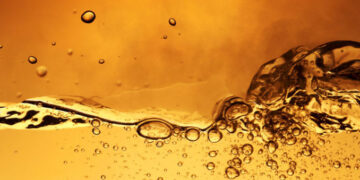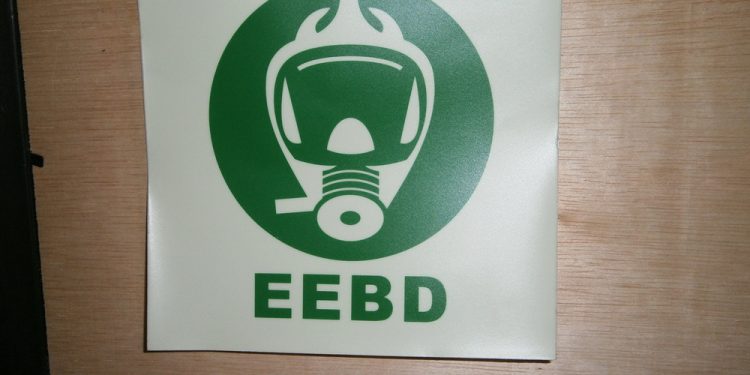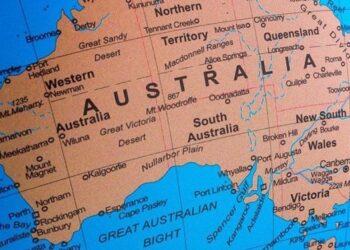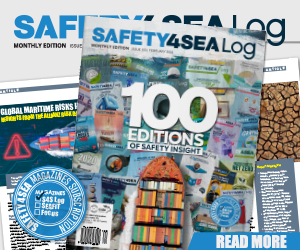The 2000 amendments to SOLAS 74, Chapter II-2, Reg. 13 require Emergency Escape Breathing Devices (EEBD) which will be used for escape from a compartment that has a hazardous atmosphere, to be available onboard. The EEBD have become mandatory under these amendments for all ships to which the safety equipment certificate is required.
What is more, offshore units certified under the 1979, 1989 or 2009 Code for the Construction and Equipment of Mobile Offshore Drilling Units (MODU Code) shall be provided with EEBDs as if they were SOLAS certified.
The Panama Ship Registry issued related Marine Notice to address key requirements regarding the EEBDs, informing that the application of EEBDs provisions onboard Panama flag ships shall be as follows:
- At least two (2) EEBDs in accommodation spaces of cargo ships and one (1) spare EEBD. Applicable to new and existing ships.
- At least two (2) EEBDs per main vertical zone, and a total of two (2) spare EEBDs. Applicable to new and existing passenger ships carrying not more than 36 passengers.
- At least four (4) EEBDs per main vertical zone, and a total of two (2) spare EEBDs. Applicable to new and existing passenger ships carrying more than 36 passengers.
For the purpose of this requirement (based on UI MSC/Circ.1081), the minimum number of EEBDs required on machinery spaces shall be as follows:
- One (1) EEBD at the engine control room if located inside the machinery space;
- One (1) EEBD at the machine shop or work shop area. If there is, however, a direct access to an escape way from the workshop, an EEBD is not required; and
- One (1) EEBD located near the escape ladder used a second means of escap from the machinery space.
- If the ship has a machinery space with more than one deck, then one (1) EEBD for each deck shall be placed at the same area as in point.
Additional spares are applicable to new and existing ships:
- Ships with 10 or less EEBDs (1) on board shall carry at least one (1) spare device as it is indicated in point 3 (except for passenger ships).
- Ships with 11 to 20 EEBDs (1) on board shall carry at least two (2) spare devices.
- Ships with more than 20 EEBDs on board shall carry spares equal to at least 10% of the total applicable EEBDs but no more than 4 spares will be required.
- Additional to the above requirements, the EEBD shall have service duration of at least 10 minutes. Also, the number and location of EEBDs and spares shall be indicated in the fire control plan.
- For existing ships, the requirement is to be complied with by the first survey after 1 July 2002. For more reference, the 2000 amendments to SOLAS 74, Chapter II-2, Reg. 1.2.2 clarify the applicable requirements to existing ships.
Training (as per the IMO MSC.1/Circ.849 – May 1998) – SOLAS Amendment 2012 II2/15.2.2.2.
Training in the use of the EEBD should be considered as a part of basic safety training. At least one (1) EEBD training device shall be used for training purpose at first Safety Equipment survey on or after 1st May 2018.
This unit device will be in addition to EEBDs required for the machinery and accommodation spaces unless onboard means of recharging EEBD is provided. If the rechargeable means is provided on board in alignment with the manufacturer’s instructions, then no additional EEBD cylinder for training will be necessary, considering that there are several types of them
One (1) of EEBD must be marked for training.
Personnel should be trained to immediately don an EEBD prior to exiting a space when the atmosphere becomes life threatening. This is necessary due to the possibility of encountering smoke during escape. Such training should be accomplished by scheduling routine escape drills for crew members working in the engineering or machinery spaces.
An EEBD may also be used to escape from a machinery space due to an accidental release of a fixed CO2 system and can be carried by firefighters for the sole purpose of providing the device to personnel in need of emergency assistance.
Inspection and Testing
- All EEBDs shall be inspected by a competent person at least annually.
- Maintenance and servicing of EEBDs shall be carried out in accordance with the manufacturer’s instructions.
- Hydrostatic pressure testing of EEBD cylinders shall be undertaken at least once every five years, or in accordance with the manufacturer’s instructions if such testing is required on a more frequent basis. The test pressure and test date shall be clearly and permanently marked on the cylinder.
- Where EEBDs are fitted with a small capacity oxygen cartridge and manufacturers specify a fixed service life without scheduled hydrostatic pressure testing (e.g. “Ocenco” M20.2), hydrostatic testing is not required.
































































